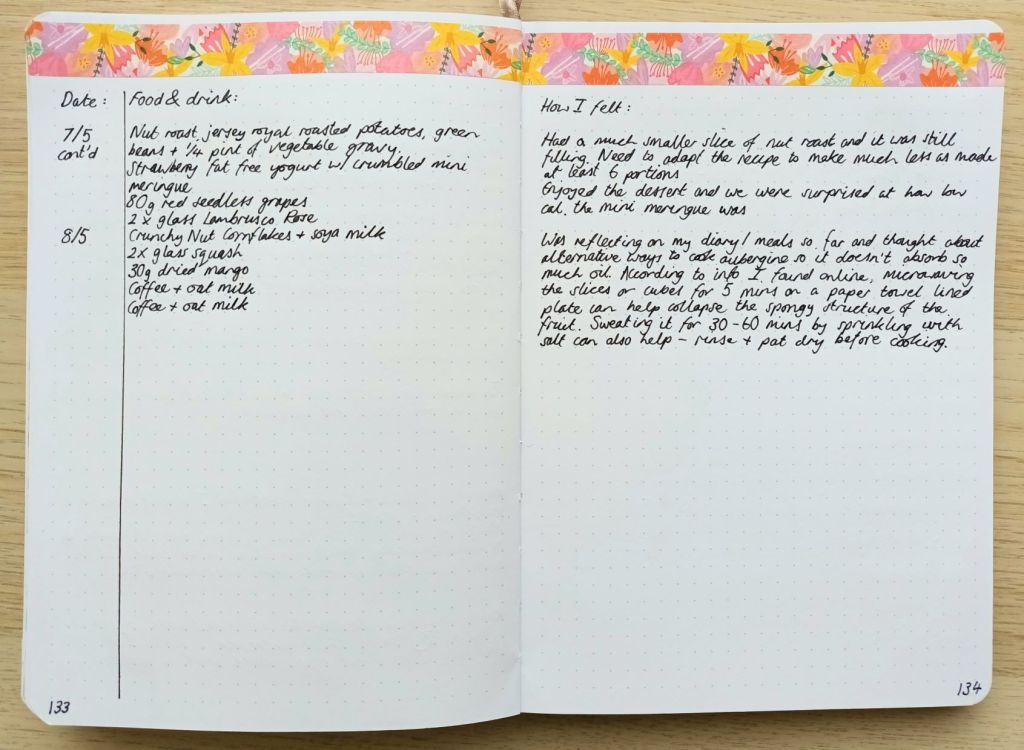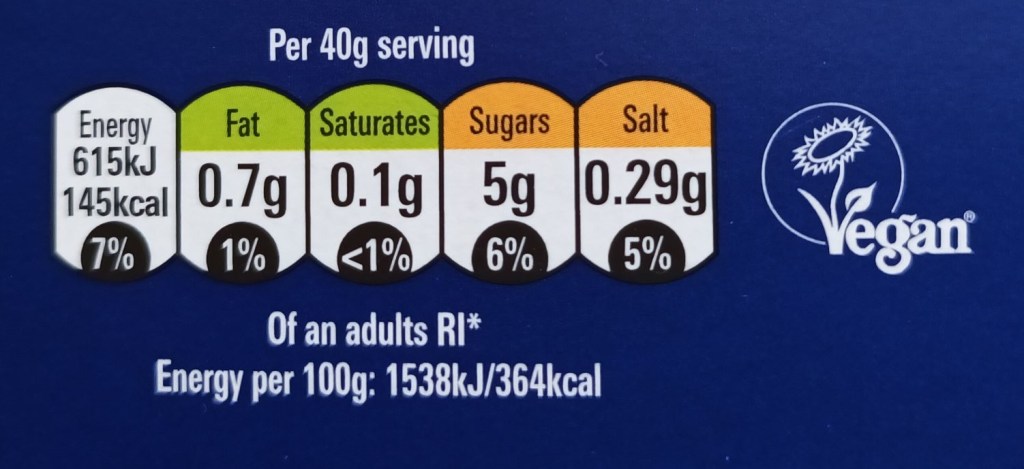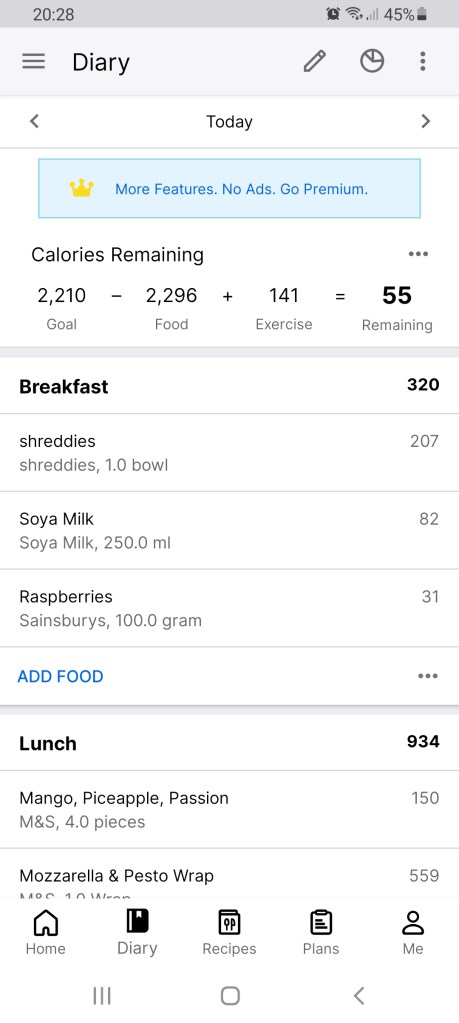Earlier this month, I talked about how I might start a food journal to help me track my eating and drinking. Before starting, I researched the benefits of this practice and spent time learning about what I should include. A number of studies have shown that people who keep a food journal or diary are more likely to be successful in losing weight and keeping it off. According to my reading, the simple act of recording everything that you eat and drink each day can help you consume less calories and make healthier choices which aids weight loss.
What are the benefits of keeping a food journal?
Writing down what you eat and drink and how you feel at regular points during the day can help in a number of ways including:
- Increased awareness of what you eat
- Shows you how much you eat and drink in a typical day
- Highlights reasons why you eat and drink e.g. boredom, stress, mid-afternoon slump, feeling sad etc
- Begin to see if you’re eating too little or too much
- Able to roughly track your calorie consumption and make comparisons between this and calories burnt each day
- Able to check hydration levels – some people mistake thirst for hunger
- Increased mindfulness i.e. awareness of eating, drinking and any patterns
- Able to see where you could tweak your diet to make it more healthy and balanced
What do I need to start a food journal?
As many of you will know, I prefer pen and paper methods so I decided to use my bullet journal to record everything. I kept it simple with a title and a bit of washi tape and I used double page spreads to give me plenty of writing room. Any notebook and pen will do but it’s helpful if it’s something you can take out with you in your bag so you can record on the go – recording everything at the end of a long and busy day is quite an onerous task!



If you prefer to keep digital records you could create journalling pages in Notion or MS Word on your phone or tablet. You could also set up a simple spreadsheet to include date, time, foodstuff and how you’re feeling. Another option is to use an app like My Fitness Pal which can help you measure calorie consumption – beware though that it will keep trying to persuade you to sign up for a free trial or pay a monthly fee! I tried logging things on My Fitness Pal to see if I liked it and I found it really quick and easy. You can scan the barcode on your food packets and it shows the calorie content. You can also see and record other nutritional information but some details are only accessible on the paid for premium version.
Tips for getting the most out of your food journal
- Log absolutely everything you eat and drink even if it’s something small or very low in calories e.g. one biscuit, a square of chocolate or a single boiled sweet. In doing this, you’ll have a full picture of your current diet.
- When you log a food or drink, consider why you are eating and how you’re feeling e.g. a glass of wine to wind down after a long and busy day, feeling shattered etc.
- Make sure you record how specific foods are cooked e.g. boiled, fried, roasted, steamed etc.
- Include information about dressings, sauces and toppings and the amount e.g. 2 tsps of French dressing on salad.
- Think about adding information about where you’re eating / drinking and who you are eating with e.g. at the dining table with family, at my desk, in XX restaurant, in a café with my partner etc.
- Jot down what you are doing at the time e.g. watching TV, at the computer, having a catch up with a friend etc.
- Be really specific about the type of drinks e.g. half a pint of beer, caramel macchiato, small mug, 200ml of orange juice etc.
- Don’t forget to include alcoholic beverages and the amount e.g. one shot glass of vodka with 100ml of coke etc.
- Think about logging the calories of meals at a restaurant if this information is on the menu, or check out the packaging of foodstuffs and drinks consumed at home.
- Write down if you get any cravings and if you gave in to them or distracted yourself with an activity.
- Note down how hungry you are when you eat.
- Record your food and drink as soon as possible after eating/drinking so you don’t forget things. If you use a notebook or paper and don’t want to take it out with you, try making a quick note on your phone to transfer to your journal when you get home.
Analysing your food and drink log
Once you’ve recorded your food and drink for 5 days or so, consider what it tells you. So, for example:
- Am I getting my five portions of fruit and veg each day?
- How healthy is my diet overall?
- Does my diet include wholegrains?
- Does my mood affect my eating and drinking habits?
- How balanced is my diet – am I eating too much or too little of something?
- Do I have snacks and how healthy are they?
- Am I paying full attention when I eat or am I often busy doing something else? (how mindful am I?)
- Which areas of my diet could be improved upon? e.g. I could eat more vegetables, I could cut down on takeaways and try to do more cooking from scratch, I could eat a piece of fruit as a snack instead of a chocolate bar in the afternoon etc.
Setting some healthy eating goals
When you’ve identified areas for improvement, you could have a go at setting a couple of healthy eating goals for yourself. I recommend using the SMART framework for this so you can measure your progress easily. So, for example, when I was depressed, I struggled to eat breakfast and got into the habit of having a bowl of Crunchy Nut Cornflakes each morning as they’re easy to eat. When I started to feel better, I continued to eat this cereal as it had become a habit and one which I enjoyed. My husband suggested I try eating a healthier cereal every other day so I’m now having a portion of Shreddies four days a week. Here’s how it looks using the SMART goal system:
S = specific. Eat a wholegrain cereal every other day – a portion of Shreddies (or possibly Weetabix as an even better alternative according to someone in the know about healthy eating)
M = measurable. Does my food journal show that I’m doing this consistently?
A = achievable. Start small, do it every other day for the time being. Eating wholegrain cereal every day will make it a lot harder and I might start craving the Crunchy Nut Cornflakes and give up!
R = relevant. Does it fit with what I want in my life? Yes, I want to break the habit of eating a sugary cereal each day. I also want to tweak my diet to make it more healthy.
T = timely. Do the above consistently for two weeks to meet the initial goal and then increase to wholegrain cereal 5 days + a week.
Other goals include breaking the habit of having a packet of sweets every Friday / Saturday and finding alternative and less calorific desserts for during the week. I intend to work towards a couple of goals at a time so that I don’t feel that I’m denying myself too much.
Final words…
Although keeping a food and drink journal can be really helpful for improving your diet and eating more healthily, I wouldn’t recommend keeping records in the long term as it can be a time consuming habit to continue and you don’t want to feel like it’s a huge chore with no benefit. After 3 or 4 days, you should start to see patterns and be able to identify a few tweaks you could make to your diet to aid weight loss and ensure better balance between the different food groups and recommended consumption of foods in the different groups such as fruit and vegetables, protein and carbohydrates. For further information about your daily eating and drinking habits, you might want to consider logging things for a couple of weeks and setting yourself some mini goals to work towards.
I had a meeting this week with one of the weight management team ladies and she suggested some ideas for tweaking my diet to increase my success. She also mentioned that she didn’t advocate calorie counting or weighing food in the long term, instead she suggested educating myself about different foods and drinks using the traffic light system on packets and developing better understanding about portion size.

Let me know in the comments if keeping a food and drink log is something you’ve done in the past, considered doing or something you definitely want to try. If you’ve given it a go, I would love to hear about your experiences whether positive or negative.
In the end, I decided that I actually prefer using the My Fitness Pal app for recording as it’s much quicker than writing it all down. I’m still learning how to use all the features but so far I’ve managed to sync my Fitbit with the app and I’ve found that you can search for recipes you found online and retrieve the nutritional information (although you can’t include any changes you made to the ingredients.

Thank you for reading,



I’ve used My Fitness Pal before for food journalling, and I found it really easy to use.
LikeLiked by 1 person
It seems like a great app for food logging. I know there’s other bits and pieces on there like workouts and recipes but I think maybe you have to have premium membership for some aspects. Did you keep up the record for long? I’m finding it’s becoming quicker to use with time because I tend to eat and drink the same sorts of things. I had over 300 calories left by the end of yesterday so I’m hoping I’ll have lost a pound or two by the weekend.
LikeLiked by 1 person
I never used the fitness side of it. I did a food journal for about a year while I was trying to stick to an anti-inflammatory diet, and I found it quite helpful.
LikeLike